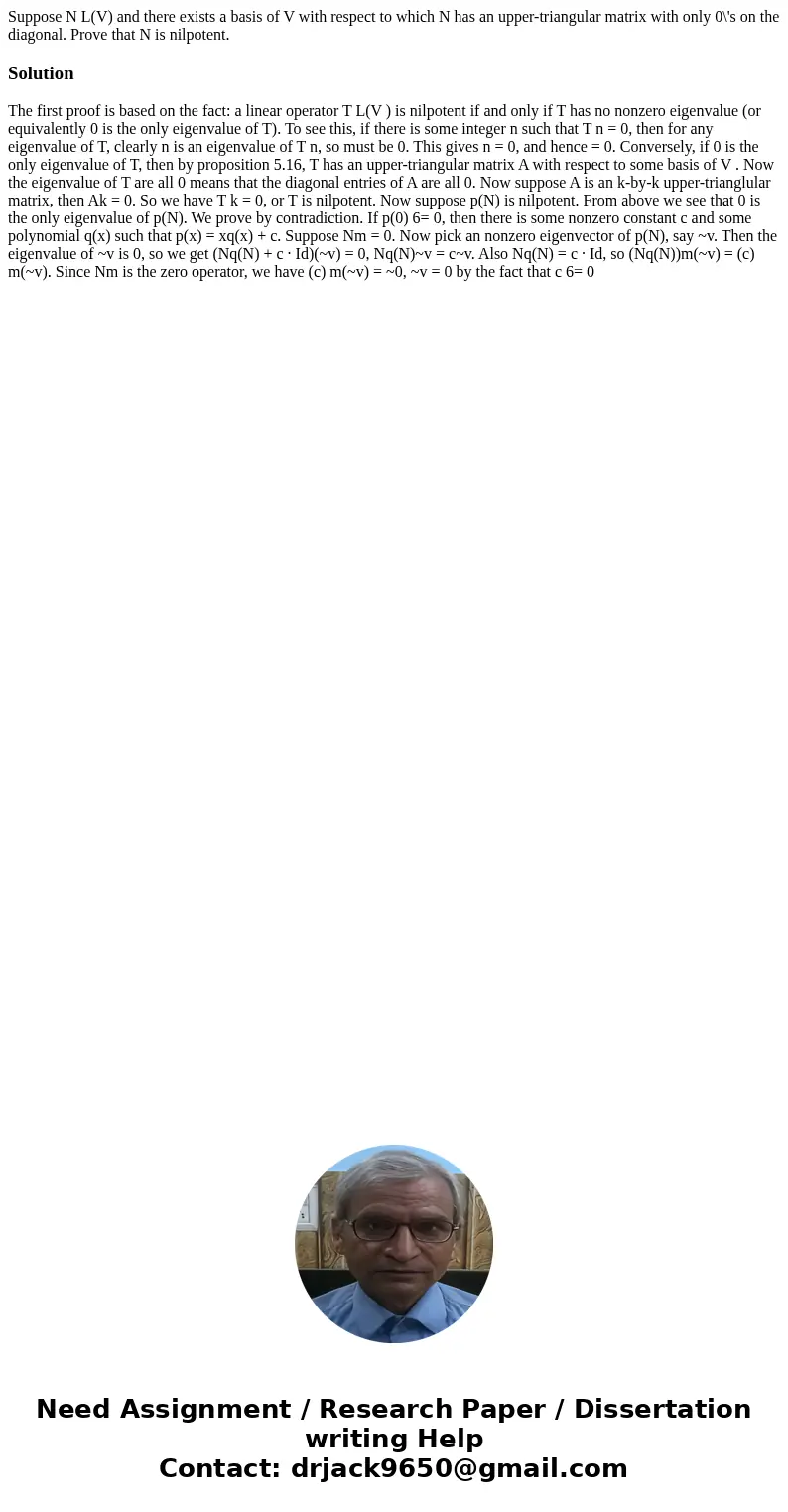Suppose N LV and there exists a basis of V with respect to w
Solution
The first proof is based on the fact: a linear operator T L(V ) is nilpotent if and only if T has no nonzero eigenvalue (or equivalently 0 is the only eigenvalue of T). To see this, if there is some integer n such that T n = 0, then for any eigenvalue of T, clearly n is an eigenvalue of T n, so must be 0. This gives n = 0, and hence = 0. Conversely, if 0 is the only eigenvalue of T, then by proposition 5.16, T has an upper-triangular matrix A with respect to some basis of V . Now the eigenvalue of T are all 0 means that the diagonal entries of A are all 0. Now suppose A is an k-by-k upper-trianglular matrix, then Ak = 0. So we have T k = 0, or T is nilpotent. Now suppose p(N) is nilpotent. From above we see that 0 is the only eigenvalue of p(N). We prove by contradiction. If p(0) 6= 0, then there is some nonzero constant c and some polynomial q(x) such that p(x) = xq(x) + c. Suppose Nm = 0. Now pick an nonzero eigenvector of p(N), say ~v. Then the eigenvalue of ~v is 0, so we get (Nq(N) + c · Id)(~v) = 0, Nq(N)~v = c~v. Also Nq(N) = c · Id, so (Nq(N))m(~v) = (c) m(~v). Since Nm is the zero operator, we have (c) m(~v) = ~0, ~v = 0 by the fact that c 6= 0

 Homework Sourse
Homework Sourse